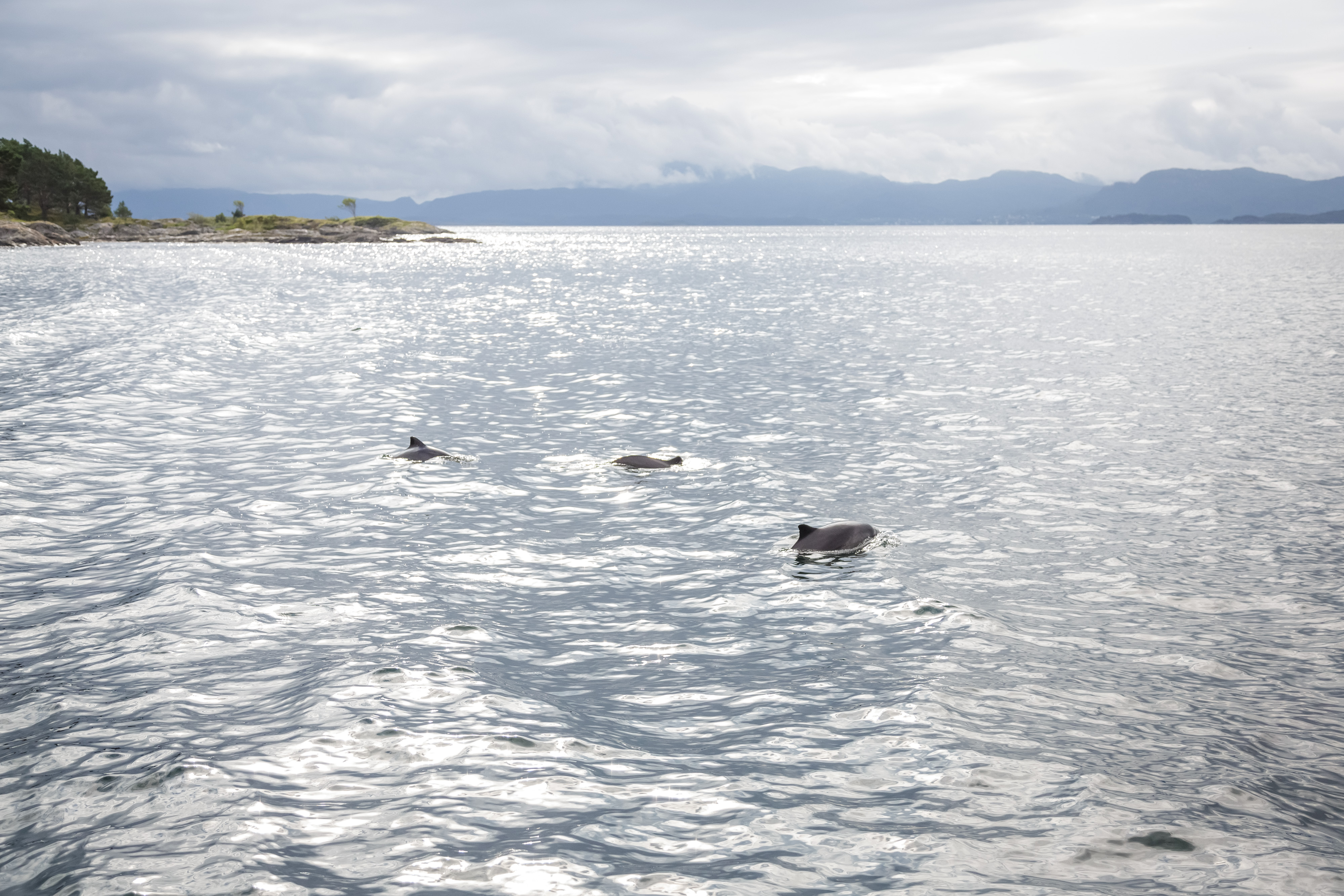On average, 2,871 harbour porpoises die each year in Norwegian gillnets

Harbour porpoise.
Photo: Institute of Marine ResearchPublished: 30.11.2020 Updated: 07.12.2020
Since 2006, the Institute of Marine Research (IMR) has been collecting data on the number of porpoises that are caught in Norwegian gillnets.
“The yearly mortality varies from just under 2,000 to over 4,000 animals per year. One reason that we see these fluctuations is because the fishing intensity can also vary a lot from year to year”, says André Moan, a PhD candidate at the IMR.
Using two different calculation methods, the scientists have worked out that on average 2,871 porpoises get entangled in Norwegian gillnets each year. They have just published their findings in an article in the ICES Journal of Marine Science.
“Our calculations also show that the annual bycatch has decreased in recent years, most likely because the fishing effort in the monkfish fishery has seen a large decline during that period”, says Moan.
Death from asphyxiation
Porpoises are marine mammals, so you might imagine that when they get entangled in a fishing net, they would eventually open their blowholes, take in water and eventuallyultimately die from drowning. But that is not the case.
“While diving, they don’t open their blowholes at all, so no water gets in. Instead, they die of asphyxiation”, says Moan.
When mammals can’t breathe, metabolic waste products like carbon dioxide build up in their bodies.
“In a way, the porpoises are poisoned from within, and that can take some time. We don’t know how this feels for porpoises, or how long it takes, but it can’t be a pleasant way to die”, explains Moan.
Porpoises live in shallow waters
“In Norway there are around 170,000 porpoises”, says Moan.
“They spend most of their time on the continental shelf, and prefer shallow waters. That creates the potential for conflicts with fisheries, since gillnets are also set in those same areas”, he says.

According to the scientists’ calculations, the average yearly number of porpoises caught in gillnets correspond to 1.71 percent of the total porpoise population in Norway. That is just in line with the maximum bycatch limit established by the Agreement on the Conservation of Small Cetaceans of the Baltic, North East Atlantic, Irish and North Seas (ASCOBANS). The Potential Biological Removal (PBR) level, another international standard used in the United States, is somewhat more conservative and implies that the number of porpoises caught as a bycatch in Norway shouldn’t exceed 1,792 animals.
Rarely live more than 12 years
Porpoises can live for up to 24 years. But because so many of them end their lives as bycatch in a gillnet, only a small proportion of the population lives past the age of twelve.
“They reach sexual maturity when they are three or four, and have one calf each year for the rest of their lives. That appears to be enough to keep the population steady. In the North Sea, where the porpoises suffer a high risk of bycatch, abundance surveys have shown that the population has been stable since 1994”, says Moan.
“But based on the international bycatch limits, the current bycatch levels for the Norwegian harbour porpoises give reason for concern and is something we should keep a close eye on”, he adds.
Stricter American import rules
Harbour porpoise bycatch may also affect Norway’s fish exports in the future. The American Marine Mammal Protection Act (MMPA), which is designed to protect marine mammals in the United States, has recently been updated.
“The new rules, which were initially supposed to come into force in 2022, have recently been delayed until 2023, state that the United States may impose import restrictions on fish and fish products that come from fisheries that have an unsustainable number of marine mammal bycatches. As such, harbour porpoise bycatch is also potentially a commercial problem for Norway and its fisheries”, says Moan.
Small “pings” deter porpoises away from the nets
Fortunately, things are looking up for both the porpoises and Norway as a fishing nation: pingers.
“Porpoises use echolocation to navigate and to find food. So they have amazingly good hearing in a particular frequency range”, says Moan.
Researchers have therefore tested small acoustic alarms than can be attached to gillnets. These small devices emit short “pings” with just the right frequency, and these pings deter the porpoises from getting too close to the nets.
“We don’t know whether they stay away because the ‘pings’ are noisy, unpleasant or interfere with their echolocation, but the fact is that pingers work very well”, says Moan.
Scientists at the IMR have performed several field experiments that confirm the efficacy of the pingers. In 2018 and 2019, 8 fishing vessels had pingers on their nets every second week.
“They caught 20 porpoises, all in nets without pingers”, says Moan.
Pingers no longer attract seals
The first pingers that the scientists tested had an unfortunate side-effect: they attracted harbour seals.
“Now we have altered the frequency, so that the pingers cannot easily be heard by harbour seals anymore. Results from our latest trials show that the pingers don’t have any effect on seal bycatch anymore”, says Moan.
Reference
Moan, A., Skern-Mauritzen, M., Vølstad, J.H. & Bjørge, A. (2020). “Assessing the impact of fisheries-related mortality of harbour porpoise (Phocoena phocoena) caused by incidental bycatch in the dynamic Norwegian gillnet fisheries”. ICES Journal of Marine Science. Link: https://doi.org/10.1093/icesjms/fsaa186
